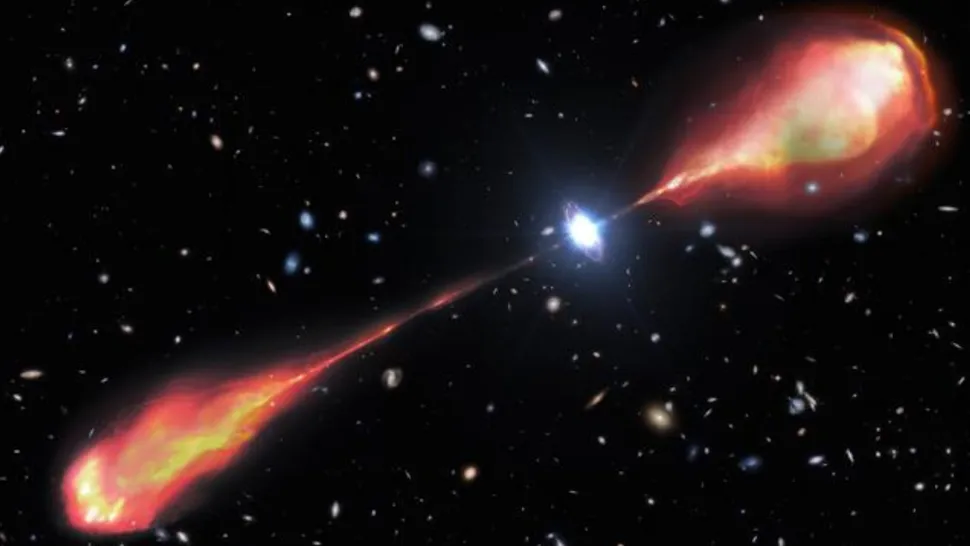
“Interestingly, the quasar powering this massive radio jet does not have an extreme black hole mass compared to other quasars,” Anniek Gloudemans, team leader and a researcher at NOIRLab, said in a statement. “This seems to indicate that you don’t necessarily need an exceptionally massive black hole or accretion rate to generate such powerful jets in the early universe.”
Painting a picture of early supermassive black hole jets
Though all large galaxies are thought to have a central supermassive black hole with a mass millions or even billions of times that of the sun, not all of these cosmic titans power quasars.
Quasars are formed when supermassive black holes are surrounded by a wealth of gas and dust upon which they can feed. This material generates a flattened, swirling cloud of gas and dust called an accretion disk around the black hole. The tremendous mass of the supermassive black hole generates tidal forces and immense friction in the accretion disk that superheats it and causes it to glow brightly.
Not all of the material in an accretion disk is fed into the central black hole; some is channeled to its poles by powerful magnetic fields. These particles are accelerated to nearly the speed of light and are blasted out from both poles as highly collimated twin jets.
























